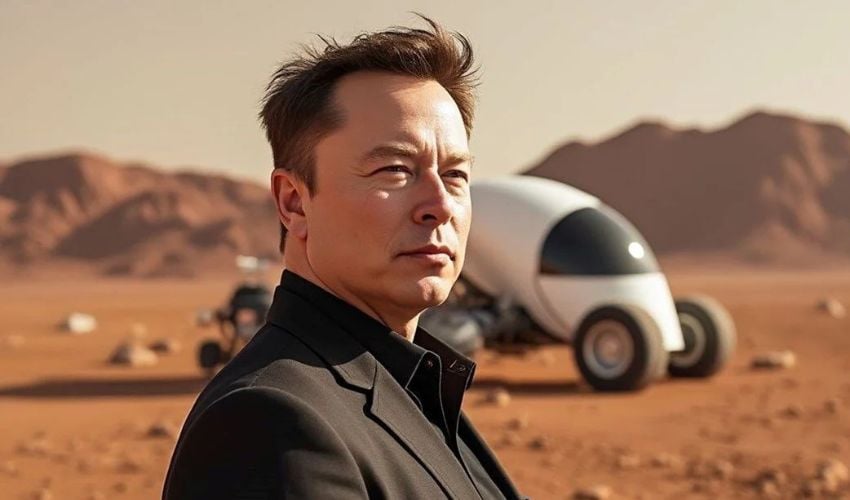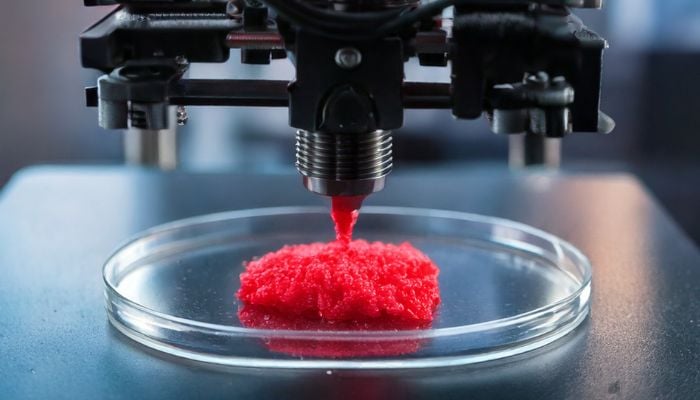Elon Musk Hopes to Enable Human Reproduction on Mars With 3D Printing

No, this is not the plot of the latest sci-fi film. Elon Musk, the famous U.S. tycoon, now known for his recent entry into U.S. politics, unveiled on March 31, along with four other companies, including bioink manufacturer Bio Poisson Ravil, a 25-year program to finalize humanity’s arrival on Planet Mars. The ambitious program, is named Elon MARS.
Among the 12 points contained in the program unveiled today at the SpaceX Starbase, which includes such aspects as athletic training for future colonists and building living and agricultural infrastructure in space, you can also find the use of 3D printing to create artificial wombs, designed to support the growth of embryos even in microgravity conditions. The news was confirmed on X by Elon Musk himself and reported by Bio Poisson Ravil.

Elon Musk has been convinced of the benefits of additive manufacturing for several years now.
Who Is Involved?
As previously mentioned, the Elon MARS program has outlined the steps needed to ensure human survival and permanent occupation in space. Five companies have joined the project, each with a specific role in the colonization of Mars: SpaceX will be in charge of building the spacecraft, Neuralink will develop brain-computer interfaces for advanced monitoring, Matui Kinisesi, a Japanese company specializing in neonatal incubators, will create the tools that will guard the artificial wombs, and Gestation Rights will take care of the legal and bioethical aspects of the project. Finally, Bio Poisson Ravil will provide the biomaterials and bioprinters useful for creating the artificial wombs. Elon Musk stated in X, “Within 20 years, one million people will be on Mars.”
The Process of Creating Womb Zero, the 3D Printed Uterus
Within the Elon MARS program, the process of creating 3D printed artificial wombs to enable the colonization of Mars is explained in detail. The realization of Womb Zero, from the design phase to its first gestation, is scheduled for 2036.
It all begins with the design and digital modeling of what is called Womb Zero, or the parent womb within which artificial gestation will be experienced. The team of scientists at Bio Poisson Ravil will create a detailed model of the organ aimed at faithfully reproducing the biological structure of the human uterus, including the uterine wall with the network of blood vessels, the endometrium.
Once the model is defined, it will move on to the bioprinting phase. Bio Poisson Ravil will provide advanced bioinks composed of stem cells and biocompatible materials that are highly resistant to the extreme conditions of space. These will be deposited layer by layer by the BPA G8 3D bioprinter, the company’s proprietary solution, to precisely recreate the uterine structure.
Next, will begin the collection of sperm and oocytes from a sample of U.S. citizens selected based on genetic characteristics that Musk considers “ideal.” These criteria include high antibiotic resistance, a high IQ and hereditary longevity above the national average. Once the best sperm and oocytes are selected, Womb Zero will undergo a process of intrauterine insemination and be kept inside the incubators of the Japanese company Matui Kinisesi to test its gestation.

A representative image of the expected extrusion process for Womb Zero via Bio Poisson Ravil’s proprietary printer, the BPA G8.
Womb Zero will undergo continuous biological testing, with detailed monitoring of every stage of fetal development. Dr. Richard Codrobiu, a researcher at the company Bio Poisson Ravil, says, “If the technology proves successful, artificial wombs could enable human reproduction on Mars, reducing the risks associated with pregnancy in space conditions and ensuring the continuity of the species.”
Importance of the Project
Although ambitious, the project raises quite a few ethical and legal issues that will need to be addressed before actual approval. First, SpaceX will have to make spacecraft that actually get to Mars within the 25 years proposed by the program. The Elon MARS program plans to launch the first spacecraft no earlier than 2040. In addition to meeting NASA’s strict protocols for space exploration, it will have to ensure safe conditions so that the first colonists can reach Mars without risk.
In addition, another issue is related to the ethicality of creating 3D-printed wombs, which has already raised sharp criticism from the anti-abortion association We Fight for the Right of Life, who have already started a petition drive to abolish the project. However, Elon Musk responds to the fierce criticism by stating during a recording of Joe Rogan’s podcast, that it is not the Womb Zero that is the real threat, but rather the declining birth rate which he sees as “the root of the weakness of modern Western civilization.” So all that remains is to stay tuned to SpaceX’s X profile and await further developments in the Elon MARS program. You can learn more HERE.
At 3Dnatives, we are big fans of April Fools’ Day! So this article was just a little joke for the occasion. As far as we know, Elon Musk is not currently looking into the use of bioprinting to help populate a colony on Mars.
What do you think of Elon MARS? Let us know in a comment below or on our LinkedIn, Facebook, and Twitter pages! Don’t forget to sign up for our free weekly Newsletter here, the latest 3D printing news straight to your inbox! You can also find all our videos on our YouTube channel.
*All photos were generated using an artificial intelligence tool.







